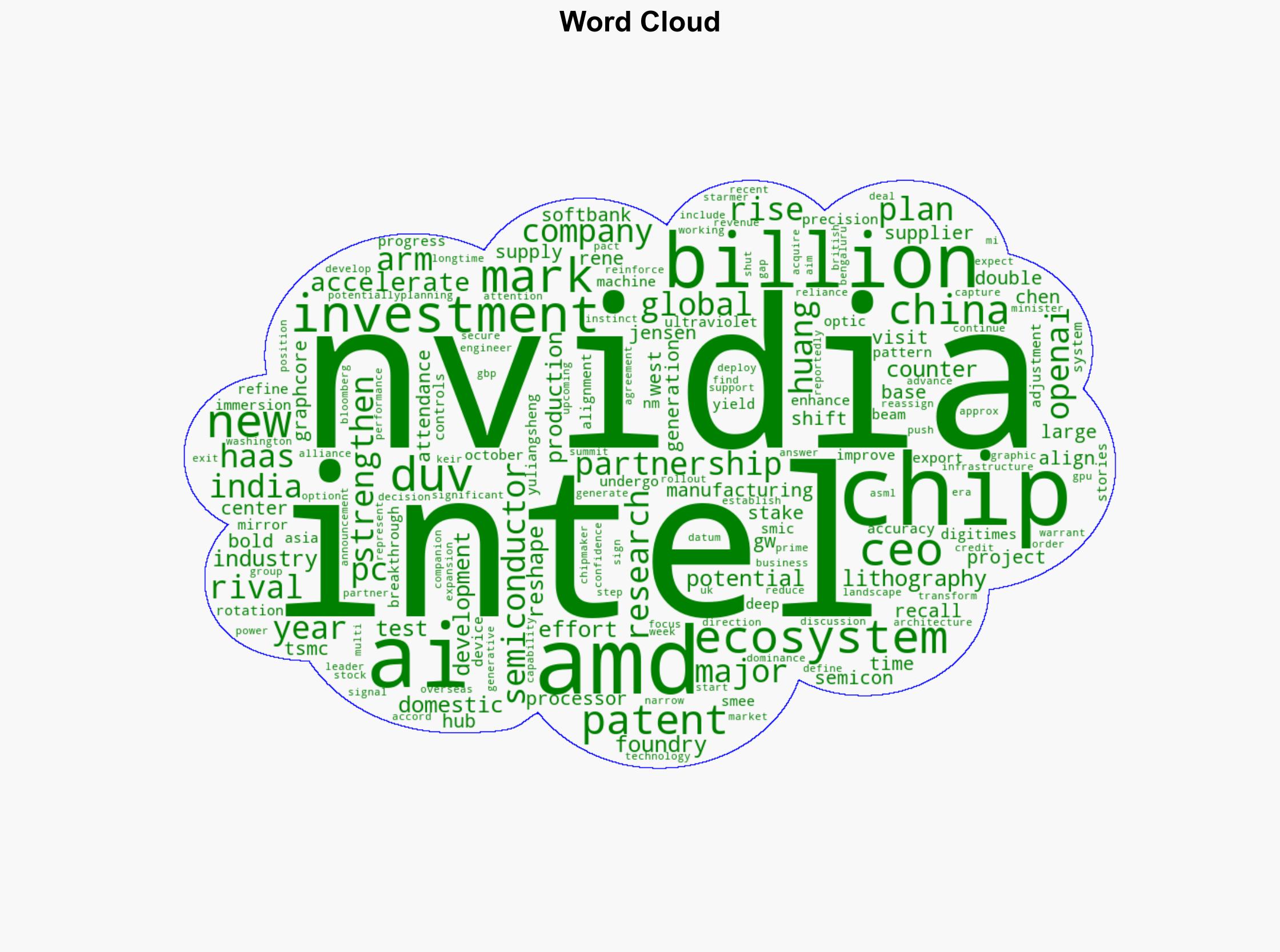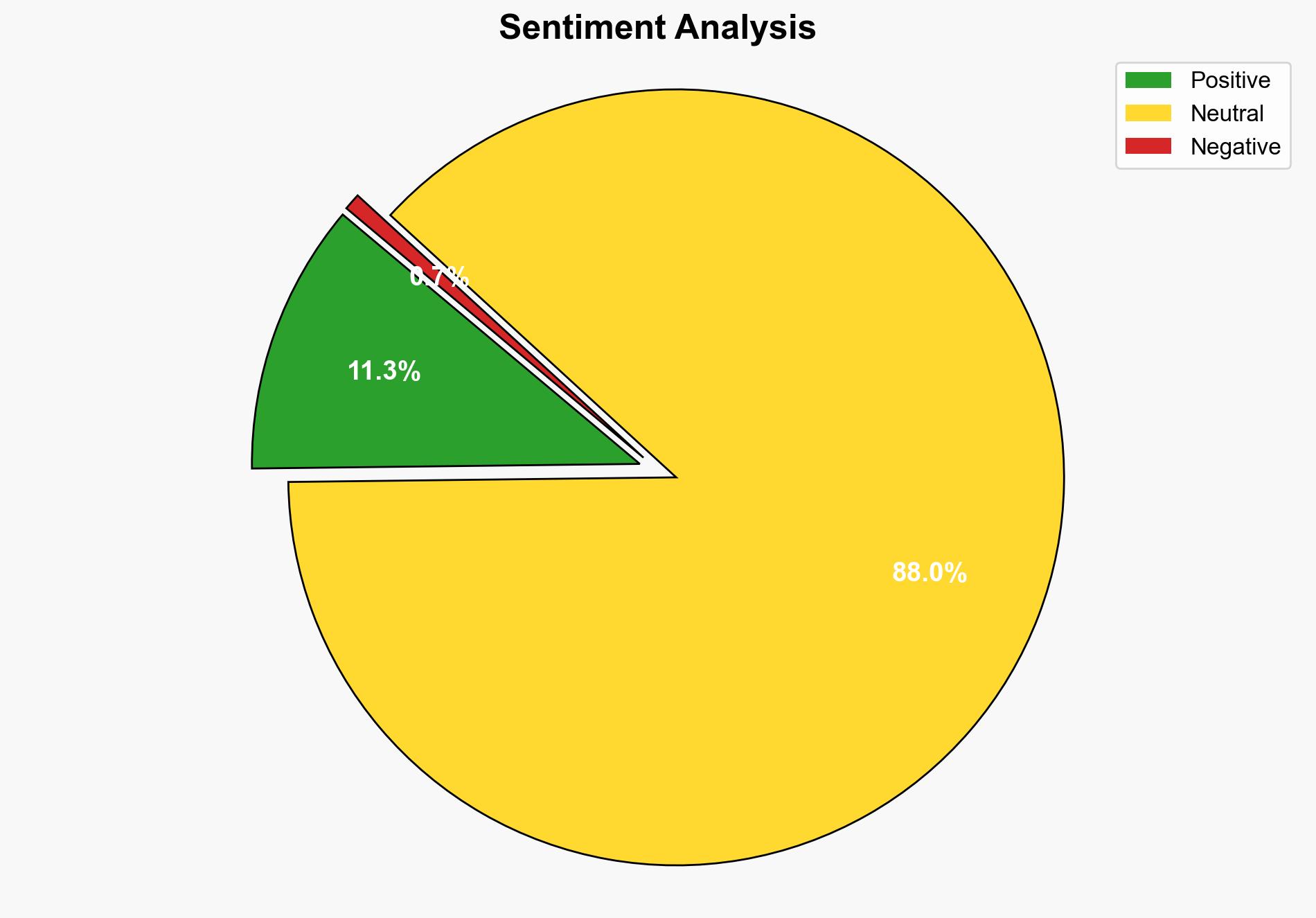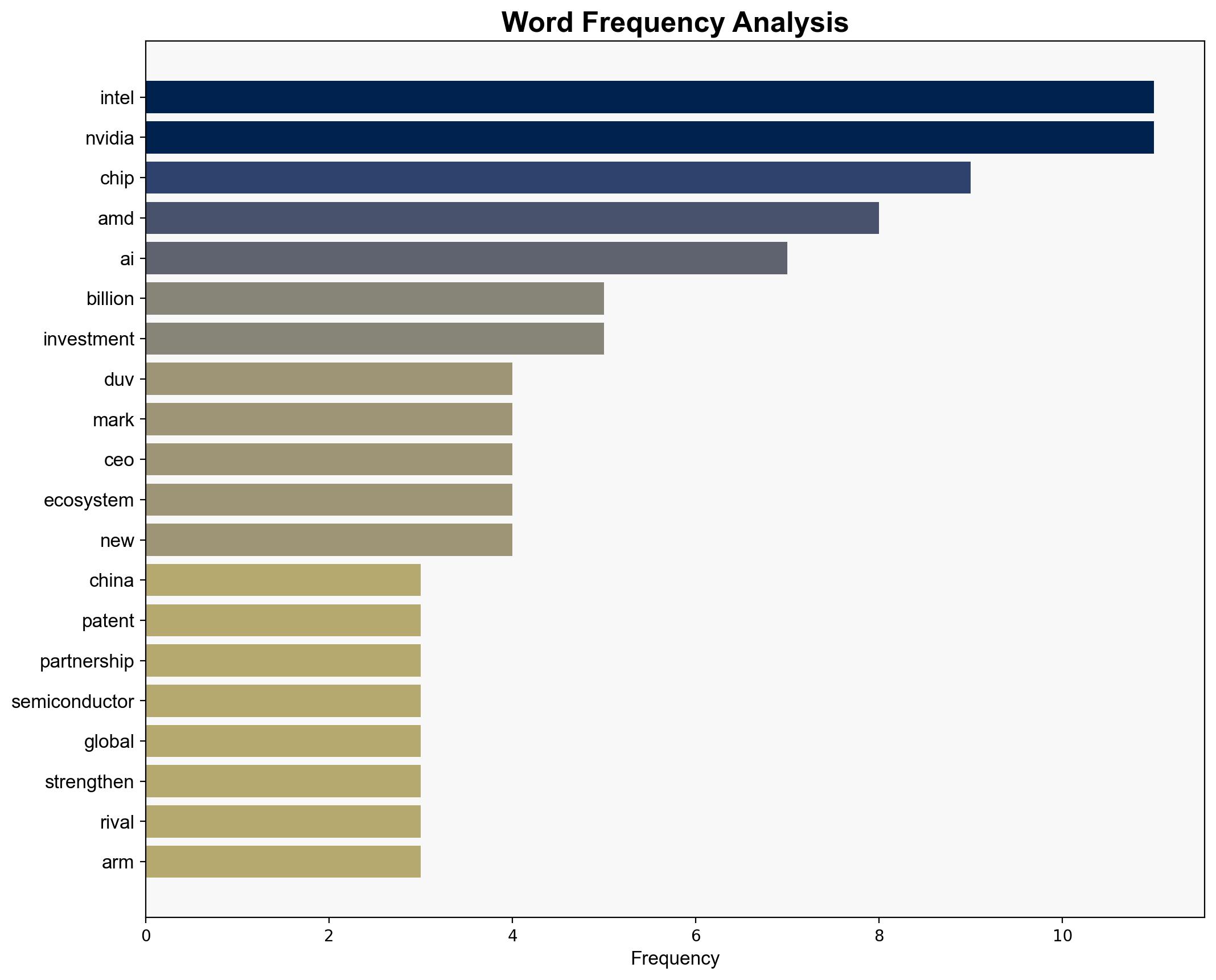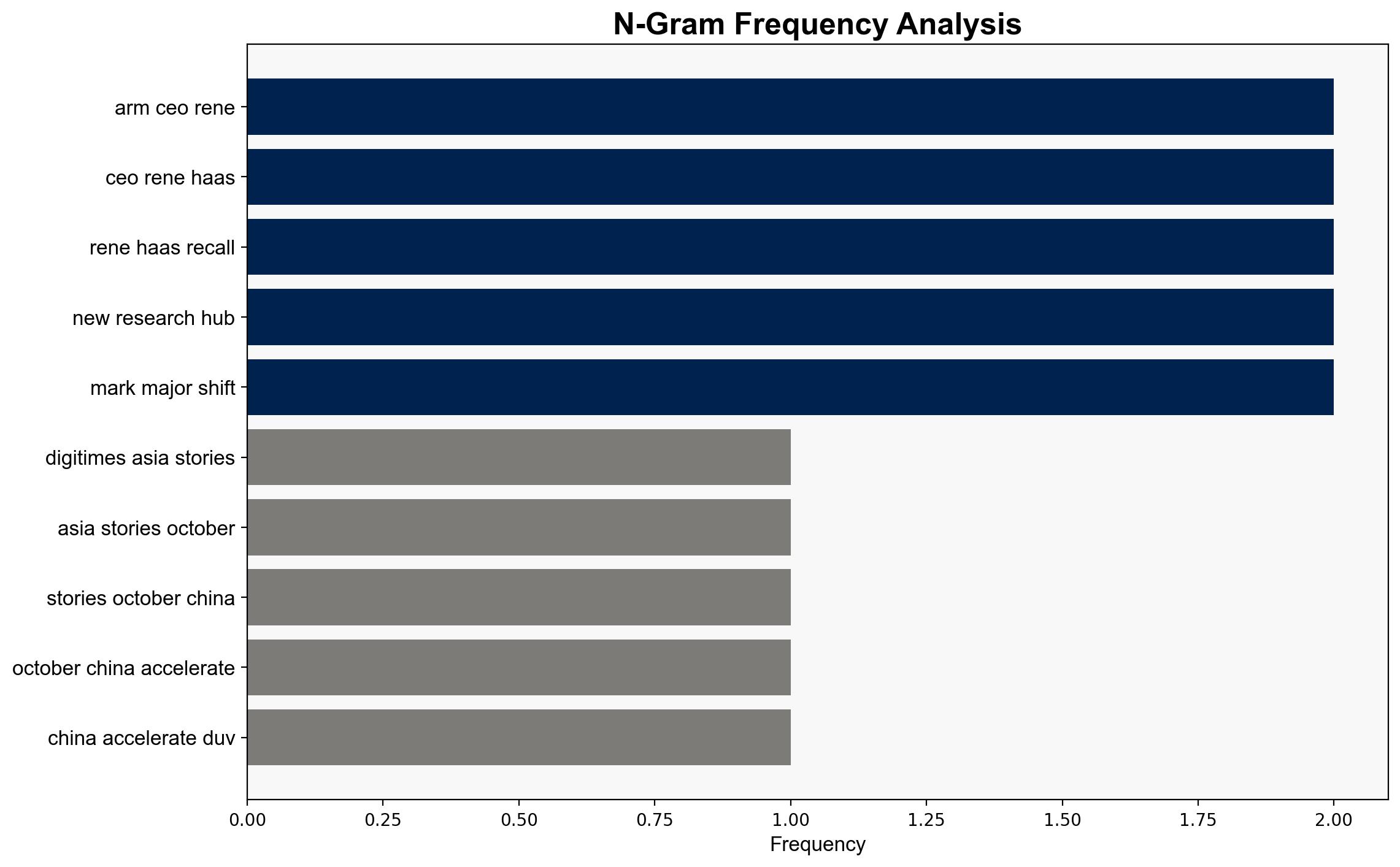Weekly news roundup China pushes DUV breakthroughs Intel and AMD weigh partnership Arm CEO reflects on Nvidia’s strategic pivot – Digitimes
Published on: 2025-10-13
Intelligence Report: Weekly news roundup China pushes DUV breakthroughs Intel and AMD weigh partnership Arm CEO reflects on Nvidia’s strategic pivot – Digitimes
1. BLUF (Bottom Line Up Front)
China’s advancements in DUV lithography and potential Intel-AMD partnerships could significantly alter the global semiconductor landscape. The most supported hypothesis suggests that these developments are strategic moves to counteract export controls and strengthen domestic capabilities. Confidence level: Moderate. Recommended action: Monitor technological advancements and partnerships closely, focusing on potential shifts in supply chain dynamics and geopolitical impacts.
2. Competing Hypotheses
1. **Hypothesis A**: China’s DUV lithography breakthroughs and Intel-AMD partnership discussions are primarily driven by a strategic need to counteract export controls and reduce reliance on foreign technology.
2. **Hypothesis B**: These developments are part of a broader strategy to dominate the semiconductor market, leveraging technological advancements and strategic partnerships to outmaneuver competitors like Nvidia.
Using ACH 2.0, Hypothesis A is better supported by the current intelligence, as it aligns with China’s historical responses to export controls and its focus on self-sufficiency.
3. Key Assumptions and Red Flags
– **Assumptions**: It is assumed that China’s technological advancements are primarily defensive rather than offensive. The potential partnership between Intel and AMD assumes mutual benefits outweigh competitive risks.
– **Red Flags**: Lack of detailed information on the technical capabilities of China’s DUV technology. Potential overestimation of the impact of Intel-AMD partnership on the global market.
– **Blind Spots**: The role of other global players, such as TSMC, in responding to these developments is not fully addressed.
4. Implications and Strategic Risks
– **Economic**: Shifts in semiconductor supply chains could impact global markets, with potential price fluctuations and supply shortages.
– **Geopolitical**: Strengthened domestic capabilities in China may lead to increased tensions with countries reliant on semiconductor imports.
– **Technological**: Accelerated innovation in semiconductor technology could lead to rapid obsolescence of current technologies.
5. Recommendations and Outlook
- Monitor China’s DUV technology developments and assess their impact on global supply chains.
- Evaluate the strategic implications of an Intel-AMD partnership, focusing on potential shifts in market dynamics.
- Scenario Projections:
- Best: Successful partnerships and technological advancements lead to a balanced global semiconductor market.
- Worst: Increased geopolitical tensions and market disruptions due to technological disparities.
- Most Likely: Gradual shifts in market dynamics with moderate geopolitical impacts.
6. Key Individuals and Entities
– Yuliangsheng
– Jensen Huang
– Rene Haas
– Jason Chen
– Graphcore
– SoftBank Group
7. Thematic Tags
national security threats, cybersecurity, semiconductor industry, technological innovation, geopolitical strategy





